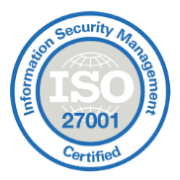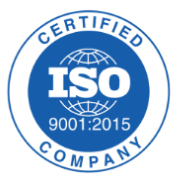In today’s digital world, technology is increasingly progressing and changing our learning path. This Ultimate Guide to Continuing education has changed into a developed industry due to eLearning and Learning Management System technology advancements. In addition, it indicates that people can learn online through various programs that offer certificates or lifelong learning opportunities.
The eLearning organization is progressing rapidly, and the LMS marketplace is currently valued at over $5.3 billion (about $16 per person in the US), anticipated to reach $1.5 trillion (about $4,600 per person in the US) by 2028. However, with several other possibilities, fascinating and preserving learners can be challenging.
Apart from these, the best thing is that several individuals want to study at their comfort, making online course materials a wise choice. However, it’s essential to choose the suitable LMS and Continuing Education program that fits the needs of learners. Furthermore, as technology evolves, learners’ preferences change, so offering relevant continuing education courses in an appropriate format is essential to confirm a better learning experience.
If you offer CE, training, or professional development programs, this comprehensive guide can help you provide an intuitive and memorable education experience for your eLearning users.
What are the professionals that require online continuing education courses?
Continuing education is the education and training professionals pursue after completing their formal education to enter a particular field. Although not all professional fields require Continuing Education courses, many need them to ensure that their employees remain highly qualified, maintain licensure, or advance their careers.
Various professions require employees to obtain Continuing Education credits to maintain licensure or continue practicing. Some common examples of these professions include:
1. Lawyers
Becoming a lawyer in the US is a complex and technical profession. As a result, the American Bar Association created the ABA Model Rule for Continuing Legal Education (CLE) in 2001 to guide states in implementing CLE requirements. Lawyers can complete CLE through various activities, including teaching and online courses. All active lawyers must complete a specific number of CLE hours each year, with different states having different submission processes. Failure to complete CLE incurs a reinstatement fee of $150 to $500.
2. Teachers
While some schools hire teachers who aren’t certified or licensed, others prefer to hire only authorized teachers who maintain their certification and pursue continuing education programs. The US Department of Education encourages all teachers to participate in high-quality professional learning programs to educate students.
Nowadays, there are various platforms for CE programs, and e-learning has become increasingly popular and effective. Online courses using text, audio, and chat are convenient for full-time faculty members. Interactive learning has proven useful, paving the way for successful results in teacher training programs.
3. Engineers
Like healthcare professionals, Engineers should keep their knowledge and skills updated in their respective sectors. Society relies on engineers to continually improve technology, structures, design, and innovation. Even if they’re not required to take a licensure exam, engineers are responsible for continuing their education through professional development.
To maintain their engineering licensure, engineers must complete a certain number of continuing education (CE) hours each year, depending on their state and engineering branch. The National Council of Examiners for Engineering and Surveying (NCEES) provides updates on licensure renewal requirements. If you plan to get licensed in multiple states, the NCEES Record can support you.
4. Physicians
In the US, most physicians must participate in Continuing Medical Education to cope with the fast-changing fields of Science and Technology. In addition, the Accreditation Council for Continuing Medical Education and the American Osteopathic Association regulate the CME programs and accredit the institutions that offer them. Therefore, it is an essential requirement for doctors to maintain their licenses and continue practicing medicine.
There are different types of continuing medical education programs available, including those provided by hospitals, CME agencies, professional organizations, learning institutions, and online web-based courses. These programs support healthcare professionals to stay advanced and updated with modern medical developments.
5. Architect
For architects in the US, continuing education is essential for staying updated with modern technology and developments in the industry and renewing their license to practice. However, other states in America need a different number of continuing education credits. Even certified industries and your company managers may force you to take particular online continuing education courses in their field.
Typically, architects have one to three years to complete these requirements to maintain their licenses. If you consider practicing architecture in different states, you must achieve specific needs, which can be listed in the American Institute of Architects instructions.
In this Ultimate Guide to Continuing education courses are constantly needed to keep up with the growing demands of various professional fields. These courses allow teams to stay updated on industry changes and deliver excellent customer service. Providing online continuing education courses is now more essential than ever. The demand for continuing education is increasing rapidly, and designing courses that meet these demands is necessary.
The rise in demand for continuing education to collect CEU credits
Ultimate Guide to Continuing education indicates several higher education learning programs and courses that support professionals in enhancing their knowledge to another level. Education professionals require CEU credits to maintain their licensure, while healthcare professionals need CME credits to demonstrate increased competency in their field.
Today, many opportunities are available to earn the continuing education credits of your choice. The rise in interest in continuing education can be attributed to several factors, but four trends stand out. This blog will explore why continuing education has become popular over the past decade.
1. The rise of virtual eLearning
The Internet has changed how we lived earlier, giving us flawless access to information, apps, and more with just a single tab of a button. Although traditional learning is still the norm, online eLearning has become a crucial part of society and has given remarkable results. According to research by Pearson, online learning courses receive over 1 billion views daily.
The popularity of online training has soared due to several reasons, including easy access to course modules, interactive and advanced learning, less time spent traveling, and the ability to learn at your own pace. As a result, 67% of organizations now offer eLearning, leading to the establishment of more Continuing Education content and service providers.
2. Increase the number of professional adult learners
Adult learners who are already professionals are the fastest-growing group in American higher education. It means that most students in colleges and universities now have jobs and other life responsibilities outside of school. Many older adults have also been starting new businesses, which has increased educational opportunities for adult learners.
Professionals who want to advance in their careers also look for flexible continuing education programs that can be completed online. Because of this trend, there is a high demand for affordable, flexible, meaningful education that results in certification. E-learning and continuing education providers have responded to this demand by developing learning management systems that meet the needs of adult learners.
3. Seeking effectiveness and engagement in learning
Providing training and professional development through eLearning is a smart business move for many reasons. Employees take less time to complete eLearning courses than in traditional classroom settings, resulting in a 45 to 65% reduction in employee time. Companies that offer technology training also see a 25% increase in revenue generated per employee.
Additionally, businesses can save money by replacing traditional instructor-based training with eLearning. However, the benefits of eLearning go beyond cost savings. Investing in employee engagement and retention is critical for businesses to succeed, and eLearning helps achieve these goals. E-learning ROI can’t be measured just through financial reports but also by the satisfaction and productivity of employees.
4. A rising competition in the job market
Continuing education is vital for many professions, ensuring professionals stay up to date with the latest advancements in their field. Maintaining licenses or certifications in over 50 domains, including teaching, nursing, accounting, real estate, and social services, is often mandatory. Continuing education can benefit professionals by showcasing their expertise, justifying a raise, making promotion requests, or enhancing their resumes.
Access to Continuing Education is a significant reason for many individuals joining professional organizations, increasing upward mobility in the job market and within current workplaces. It provides opportunities for professionals to continue learning and developing, motivating individuals to earn new credentials and fulfill their desire for knowledge.
What will take your continuing education program to an advanced level?
Content Delivery
Providing content to learners is about more than just what you deliver and how you present it. Even if your course material is excellent, it can be challenging to engage learners if the presentation needs to be more organized and formatted. In addition, becoming a content expert can be difficult, with many tools available on the market. Thus, picking the right learning platform to support your content delivery strategy is crucial. Four popular content delivery trends have become necessary for CE professionals to stay competitive. These trends can help you stand out and keep learners engaged. By staying on top of these trends and using the appropriate learning platform, you can provide a seamless and practical learning experience that resonates with your audience.Mobile Learning
Having a mobile-friendly education or training program is essential nowadays. You can only meet modern learners’ expectations if your course content adapts to different screen sizes. Many people prefer mobile learning as they can access course material on the go. Nearly all industries are utilizing smartphones in their continuing education programs. Making your content mobile-friendly will attract more learners, provide a better learning experience, and keep you competitive in the CE marketplace. Don’t lose potential customers to your competitors by failing to make your content mobile compatible.Webinar
In the online world, webinars are a popular way for professionals and organizations to share information with their audience. But when it comes to Continuing Education (CE), webinars play a vital role. CE webinars are virtual events where a speaker presents educational content to an audience, using interactive tools to answer questions and gather feedback. With an excellent continuing education LMS, these webinars can even provide post-session evaluations, tests, and certificates. CE webinars are great for learners who want to earn credits without disrupting their schedules or traveling far. They also connect learners with subject experts who can offer hands-on advice for their profession.On Demand Content
People often need help to pursue Continuing Education due to busy work schedules, family obligations, and unexpected commitments. Although webinars provide access to eLearning content from anywhere and any device, on-demand content offers even greater flexibility for busy professionals. On-demand content consists of recorded webinars, webcasts, and other video-based virtual events that viewers can watch at their convenience. Previously, learners had to watch an entire on-demand webinar replay to receive course credits, but now technology allows them to view the content in segments and “hold their spot” for later. Recent studies show that a quarter of webinar registrants sign up for on-demand access, highlighting its importance. Adding on-demand content can also boost sales and revenue if monetized.Rise in demand for video content.
To effectively educate and train professionals, there is a growing need for visual aids. As a result, businesses and educational organizations are turning to video as a solution to cater to this evolving workforce. Marketers and sales professionals have found that video content can boost engagement, social media presence, and email click-through rates. It’s an excellent tool for conveying value propositions and messages to viewers while humanizing a brand. Furthermore, a recent survey revealed that 98% of respondents recognize the value of using video for efficient and effective employee training. Additionally, 75% found video content highly valuable for continuing education programs.Better user experience
In today’s world, delivering a smooth and hassle-free digital experience is crucial for your business’s success. Your competitors already use modern UX trends, and you must do the same. To achieve this, you need an easy-to-use platform that enables your users to navigate your program and content seamlessly. So, what makes for an excellent user experience in an eLearning environment? To ensure a high-quality UX, captivate your audience, provide an immersive experience, deliver your message effectively, and make learning easy with a user-friendly platform and reasonable pricing.Microlearning facility
Virtual continuing education programs are very convenient for learners, but micro-learning is a new trend that takes saving time to the next level. Microlearning means that educational content is delivered in small, bite-sized portions. For example, instead of sitting through a long lecture, a student might watch 5-minute video clips about a specific topic and then complete a related assignment. This approach focuses on one learning objective at a time, making it easier for busy people to learn and apply information. In addition, microlearning is a great way to support knowledge comprehension and retention.Try Paradiso Free for 30 days
Paradiso CourseCart is everything your online business needs.
All in one place
Let’s see how continuing education functions Work
Are you searching for a modern Learning Management System? The top-notch systems are crafted with Continuing Education as their core focus, and they should be customized to fulfill your organization’s precise requirements comprehensively. In terms of features, these seven critical factors should be considered.
1. Continuing education program templates
The most effective approach to fulfilling all Continuing Education requirements, including those at the state level, is to utilize a platform that creates highly adaptable certification templates. It enables you to design a template (or request the platform provider to do so) that corresponds with all available credit types you provide. In addition, each template will have tailored settings configured for the educational activity you’re organizing, and they can be prepared ahead of time or on an as-needed basis.
2. Automated organizational work
A professional Continuing Education solution should aid your organization in saving time that is often consumed by laborious administrative duties. Automated tracking of participation and verification processes should be implemented (such as requiring event attendees to submit a code via a randomly appearing pop-up notification box during the presentation). Moreover, your Continuing Education solution should support the automated grading of exams, where the tool regulates the test and delivers the outcomes to your learners.
3. Simplified certification process for live and physical programs
To make it easy for your eLearning audience to register, avoid requiring them to download a separate app or plug-in. Technical issues with external applications often result in learners having difficulty accessing their programs. Keeping the registration and event participation processes in one place is the best technique to avoid such unexpected technical problems. Though not all continuing education actions occur online, an appropriate CE solution should be able to regulate the registration process, certification, and other procedures for online, physical programs too. A top-notch CE platform will automatically handle email confirmations and reminders and provide handouts and other resources.
4. It is designed to support numerous accrediting bodies
An exceptional Continuing Education platform is designed to support numerous accrediting bodies. If your current provider is not offering such support, it is essential to consider finding a better solution. Partnering with a platform that helps you achieve your goals is crucial, and it’s vital to ensure that they can provide the necessary assistance for your accreditation needs. Only settle for a provider that meets your expectations and requirements. Switching to a better solution will help you streamline your processes and ensure your organization complies with the necessary accreditations. Therefore, choose a platform that aligns with your organization’s objectives and provides additional support.
5. Help you to earn money from your eLearning courses
Investing in a Continuing Education platform with built-in e-commerce capabilities is crucial to earning money from your eLearning courses and virtual events. In addition to collecting payments, the platform should support sponsorship and advertising models. To ensure secure transactions, you need a Secure Sockets Layer-certified platform that meets legal requirements for storing customer financial data. It’s also essential to comply with data privacy laws, such as GDPR, especially for international customers. Therefore, your chosen platform should provide a solid legal basis for storing and processing customer data.
6. Personalized branding experience
If you’re using another company’s learning management product, it can be customized to match your organization’s branding. The platform should be highly configurable, allowing you to customize views and dashboards for the back end and user-facing profiles. Choosing a solution that aligns with your branding guidelines, such as your logo and color scheme, is essential. This way, the platform will look and feel like a natural extension of your organization. The more customization options the platform offers, the more tailored the experience will be for your learners.
7. Extremely customizable program workflows
After learner complete educational content, it’s common to include a test as the next step in Continuing Education workflows. While exams may be optional, some national accrediting bodies require them. The workflow may also include data collection, surveys, and knowledge checks. Therefore, it’s essential to have the ability to customize the format and incorporate these elements. When choosing a CE platform, make sure to ask about this flexibility. A platform that offers customizable layouts will allow you to tailor the experience to your learners’ needs and provide a more engaging and practical learning experience.
Choose the best LMS platform for your continuing education program
Have you noticed any technical glitches while using your virtual event platform? Is your accreditation process creating difficulties with your Learning Management System? Do you rely on different vendors for certificate delivery and on-demand content production, or resort to manual methods for grading exams and conducting surveys?
A top LMS for continuing education can provide, manage, and report eLearning. Using the best-continuing education platforms, any professional can access the course materials on time, connect with and study on-demand with digital content such as videos and PDFs, take quizzes and assignments, and attend webinars or other types of live virtual training to get certified.
Not all LMSs can handle the requirements of continuing education programs. Paradiso LMS exhibits the flexibility and technical ability to cope with the complexities of imparting continuing education online learning management system. Besides, Paradiso LMS is fully customizable,
It is an easy-to-use yet robust and cost-effective learning management system for students and administrators.
Benefits of having Paradiso LMS for continuing education
End-to-end CE Functions
With Paradiso LMS, all the phases of your continuing education programs, from registration through completion, would run smoothly.Self-Managed CE Programs
Give your student users the ability to create and manage their accounts, complete programs, and get their certificates printed.Improved CE Efficiency
Paradiso LMS eliminates the need for manual, repetitive staff chores while helping you set up online continuing education programs in minutes.Save Time and Money
Paradiso LMS can handle complex continuing education requirements out of the box. As a result, it saves you technical headaches and hence, time and money.Advanced Features of Paradiso LMS that makes Continuing Education flawless
1. Integration with 100+ your Favorite Apps
Paradiso’s continuing education platform can talk seamlessly with all the multiple systems you need every day to manage your continuing education program. And all this talking happens seamlessly over the single sign-on (SSO), where your users can sign into the software of their choice with a single set of credentials.
2. Credit Level Flexibility
With Paradiso’s continuing education software (LMS), you can give out course credits depending on your learner’s profile, geographic location, or any other user profile fields you want to define. Besides, you can give your learners to choose from the various types of credits (CEU, CLE, CPE, CME, etc.). The essential credit support feature Paradiso LMS flaunts is the ability to assign one or multiple credit types and values to learning activities.
3. Requirement Setting Flexibility
Paradiso LMS for continuing education allows you to support content types and categories to align with the accreditation body requirements. Not just the content, Paradiso LMS allows setting the mandatory pre and post, interval retention exams required to clear a given certification by the governing certifying body.
4. Self-Serviced eLearning
Give your learners self-service access to all the credits earned and course completion certificates. The best part? All the certifications display the credit and course information appropriately according to the accreditation body’s rules. Also, your learners can upload externally earned credits, proof, and manage all their CE centrally inside Paradiso’s continuing education software systems.
5. Automated Generation of Certificates
Paradiso LMS allows the automation of course completion certificate generation. It also allows the learner to change the certificate information based on varied criteria when reporting to multiple governing bodies. The best part about Paradiso LMS is that it sends reminders to the learners based on when the certification needs renewal.
6. Integrated eCommerce
When continuing education, allow learners to browse eLearning courses, register for classes, access content effortlessly, and purchase the CE courses via an easy-to-use shopping cart, streamlined checkout process, and comprehensive payment options. When a learner buys a course, they get immediate confirmation of a successful transaction and direct links to their accounts for easy, quick access to purchased courses. Now that’s a seamless eCommerce experience!
Take your learning to the next level with a Continuing advanced education LMS.
As a healthcare professional, it’s mandatory to have Continuing Education (CE) approved by the Board, state, and government. In addition, medical associations, hospitals, and other organizations can attract and keep talented medical professionals by providing quality continuing education courses. Paradiso AI-powered LMS is a learning management system that offers all the necessary tools to provide such courses and emphasizes CE’s importance. In addition, the system is designed to enhance the user experience, adhere to Assembling Configuration Management Environments (ACCME) guidelines, lower administrative costs, and demonstrate tangible outcomes.
Transform Your Learning Experience with Paradiso LMS: The AI-Powered Learning Solution
Paradiso LMS is a cloud-based, AI-powered learning management system designed to help businesses and educational institutions deliver effective training and learning experiences to their learners. With its intuitive interface and powerful features, Paradiso LMS provides a seamless learning experience that allows learners to access learning materials, collaborate with peers, and track their progress easily.
What sets Paradiso LMS apart from other learning management systems is its advanced AI capabilities. With AI-powered features like personalized learning paths, predictive analytics, and chatbots for learner support, Paradiso LMS can provide learners with a tailored learning experience that meets their unique needs and preferences. Additionally, Paradiso LMS offers seamless integration with popular e-learning tools and platforms, making it easy for organizations to streamline their learning and training processes.


















